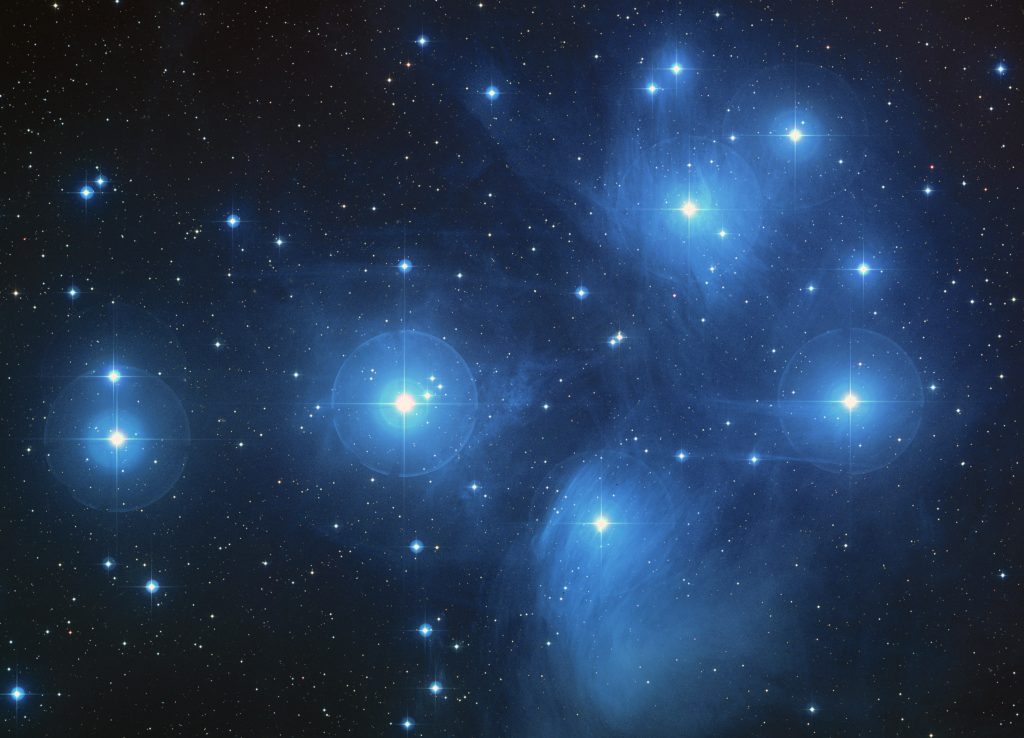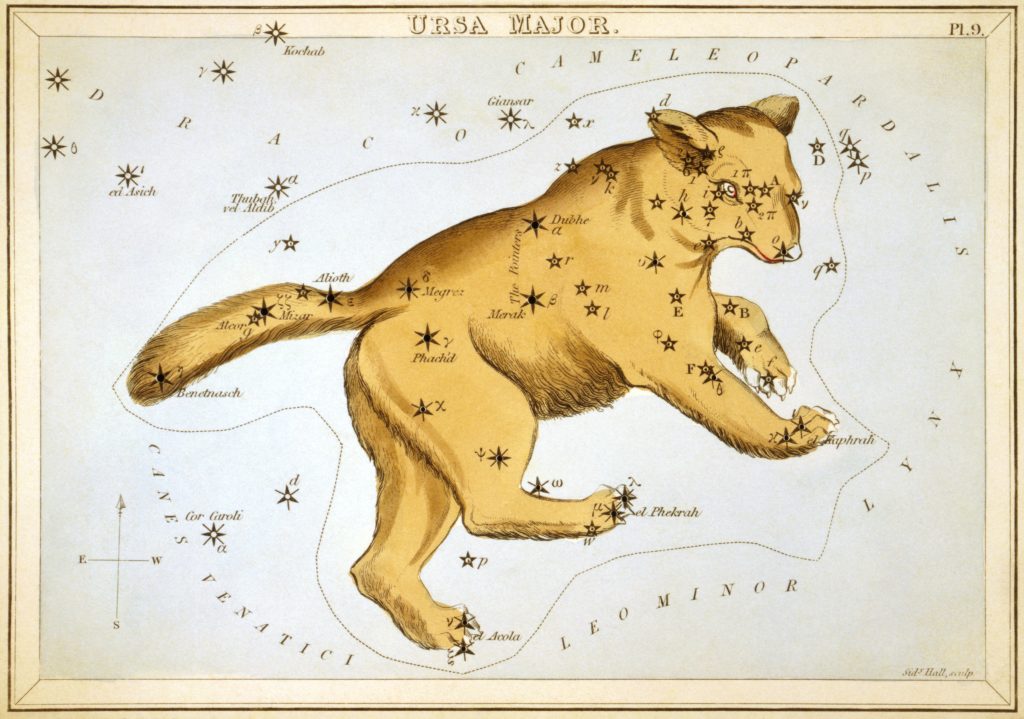
While we modern folk go about our evening bustle under the glow of city lights, citizens of the ancient world had nothing but the stars to light their nights. All information under the Sun rests in our back pockets, but it seems your average ancient chap knew more about the movements of the stars than many of us today.
For you time-travelers, here we present a beginner’s guide to stargazing. Take caution, for there be dragons.
SELECTING A SPOT FOR STARGAZING
As a beginner’s resource, this guide will require nothing but the dark sky and your beautiful little peepers. That said, a few conditions must be met to satisfy curious stargazers:
Dark skies
Cities give off a glow that extends for miles. But the further you get from dense populations, the better you’ll be able to see the sky. And if it’s dark enough, you should be able to see the hazy band of the Milky Way. Consult a light pollution map for specifics. But in Rhode Island, the darkest skies can be found on the ocean and near the Connecticut border. Little Compton is great. New Shoreham is even better.
Clear skies
You’ll also need clear skies. Folks often complain of overcast days blotting out the Sun. But a cloudy night can occult the stars. For primo stargazing, you’ll need a cloudless, Moonless night.
Big skies
Lastly, you’ll need big skies. That means sight lines that stretch from horizon to opposite horizon. Beaches are perfect for this. But broad farmland or a high peak can be effective as well. My favorite place to stargaze is East Beach in Westport, MA.
WHAT TO LOOK FOR IN THE NIGHT SKY
Much of the fun of looking up at the night sky is being able to navigate your way through the stars without the aid of your everything device. That said, the first trick anyone should know when reading the stars is how to find north.
By pure coincidence, Polaris happens to be the star resting right at celestial north. And in a thousand years it will move somewhere else. But for now, to find Polaris (and north), you will first need to find a very useful constellation.
Constellations & Stars
The Big Dipper is pretty easy to spot. Its stars are bright, and it looks just like a big ol’ ladle in the sky – a trapezoid basin at one end and an arced handle at the other. If you draw a line from the bottom edge of the basin up, it points right to another bright star called Polaris, the North Star.
In Black American folklore, the Big Dipper is also known as “The Drinking Gourd.” Those fleeing the South for freedom in the North were told to “follow the Drinking Gourd.”
Sirius is the brightest star in the sky. Known as “The Dog Star,” he forms the eye of Canis Major. The easiest way to find Sirius is to look for the constellation Orion. Orion is a giant hunter in the sky. He kind of looks like a stretched out pentagon with two stick legs, a bow in front of him and his other arm raised over his head. Below him, you’ll find the bright star Sirius.
The three stars at Orion’s waist are known as “Orion’s Belt,” and his lower shoulder is called Bellatrix. Harry Potter fans will find much of the Black Family Tree in the stars. Sirius’s brother, Regulus, is the heart of the Leo constellation. And his nephew, Draco (or “The Dragon”), is a constellation that circles ‘round Polaris. From which we can conclude that JK Rowling had her head in the stars.
Betelgeuse (pronounced “Beetlejuice”) is Orion’s other (higher) shoulder. This star system is the home of Ford Prefect from Hitchhiker’s Guide to the Galaxy. People think the name sounds silly, but by all accounts, “Beetlejuice” is the most accurate pronunciation for the word of Arabic origin.
Cassiopeia is another constellation circling ‘round Polaris. She was the beautiful queen of Ethiopia in the Iliad and mother of Andromeda. She’s pretty easy to find: Just look for a crooked “W” in the sky. That’s Cassiopea’s thicc seat.
Of course, Providence folk might appreciate finding the Seven Stars of the sky. The Seven Stars (aka the “Seven Sisters”) are a cluster of stars named after the daughters of Atlas. They are the namesake of the Seven Sisters colleges. And you can find their cluster above and just out of reach of Orion’s bow. In Japan, the Seven Sisters are known as Subaru.
SHOOTING STARS
Late fall is a fantastic time to watch out for “shooting stars.” These meteor showers are so frequent that with only a couple of minutes of stargazing you’ll likely see many “stars” to wish upon. In early October you can spot the Draconids (meteor showers beginning near the head of the Draco constellation). And around mid-October, you should be able to see the Orionids near Orion’s raised arm.
THE PLANETS AND “RETROGRADE”
This time of year is also a great time to spot the other planets. Jupiter is brighter than any star in the sky. You should be able to spot him tooling around near the Moon most nights (and even during the day).
Jupiter is actually in retrograde at the moment. Because of our perspective from Earth, the other planets of our solar system sometimes appear to be moving backwards (towards the east), when most of the year they ride with us in an ever westward procession. This is why planet means “wanderer” in ancient Greek. This is called “retrograde,” and it’s really just a perspective trick.
Once you can identify a few stars in the sky, it’s natural to crave more. Check out the historic Ladd Observatory near Brown’s campus. It’s open to the public on Tuesday evenings, and you can reserve a spot on their Eventbrite. Alternatively, Acadia National Park (which enjoys some of the darkest skies in the Northeast) hosts an annual Night Sky Festival every September. Other options are described later in the magazine.

A Stargazer’s Mixtape
45-minutes of groovy twilight tunes for your night sky reveries.
(1) “Affected By The Moon” by Chuck Pyle
(2) “Follow The Drinking Gourd” by Eric Bibb, Linda Tillery, and Taj Mahal
(3) “Starry Starry Night” by Lianna La Havas
(4) “Stars Fell On Alabama” by Ella Fitzgerald and Louis Armstrong
(5) “Blues In Orbit” by Duke Ellington
(6) “Catch a Falling Star” by Jane Morgan
(7) “Tapestry from an Asteroid” by Sun Ra
(8) “No Moon At All” by Julie London
(9) “Come And Play In The Milky Night”
by Sterolab
(10) “Someone Like The Moon” by Pulp
(11) “Cosmic Bloom” by Dumbo Gets Mad
(12) “Meteor” by Kenya Grace
(13) “Gravity” by Roy Ayers, Adrian Younge, and Ali Shaheed Muhammad
(14) “Sun, Moon, Stars” by Mos Def
More Posts by The Author:
On the Cover: Jordan Seaberry
Joke Theft: The ethics of AI and copyright
Green Line Apothecary: The “Aesthetic” of old school cool
Artificial Food: AI and the fast food industry
This Porridge is Too Good


